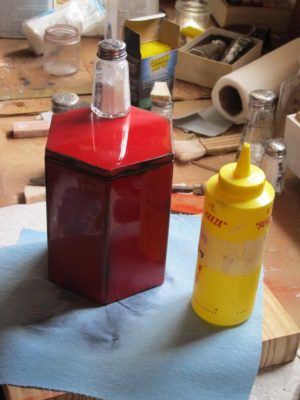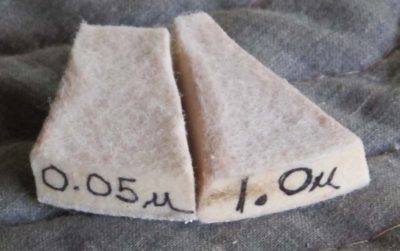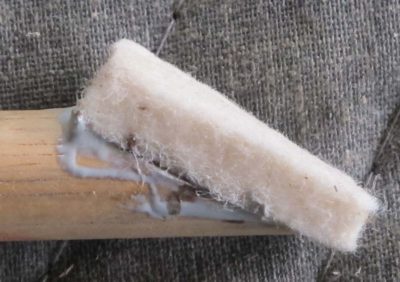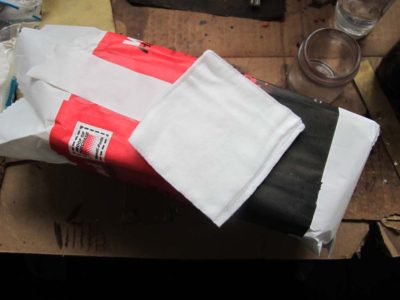Tools For Polishing

At the recent Groopshop I was showing off the faux urushi hexagonal box I have been experimenting on, and the question of my polishing procedures came up. (I will be revisiting the issue of cissing epoxy very soon) So I thought I would go over it here. It is very similar to the procedures I use to polish tortoiseshell, about which I blogged last year I think.

For the most part I use a cut-up felt buffing wheel as my rubbing blocks that I charge with the abrasive polish. I probably bought this one on-line at Caswell or maybe even at a Woodcraft store but I honestly cannot remember precisely as it was many years ago. They do not really wear out, and I only discard them if they get contaminated.
As for the abrasive powders for final polishing I generally use three: 1.0 micron agglomerated microalumina, 0.05 micron agglomerated microalumina, and whiting. (At times I will use 4F pumice or rottenstone/tripoli to get the final stages, but then I switch to the metallography powders) The first two are ultra-fine abrasive polishes used for preparing laboratory samples for metallography or geological examination, the third powder is also used for mixing up gesso. The microalumina powders come from Buehler, and my favorite whiting for polishing is Gamblin brand I get from Dick Blick.
For the polishing slurry medium I use water, naphtha, or alcohol, depending on which is appropriate for the substrate being polished.

I make a point of cutting a polishing block for each grit, and usually for each material being polished. I mark them with permanent marker to help keep them straight. This pair of felt blocks are for use on transparent coatings, but I have a separate set for silver, copper alloys, tortoiseshell, and ivory.


For intricate surfaces I take a 1/4″ dowel and cut the end at a shallow angle, then epoxy a small chunk of felt to the end to use as my polishing surface so I can reach difficult or recessed locations.

I generally use Webril litho pads for cleanup of the dry abrasive powder afterwards. Alternately I might use hypo-allergenic cosmetics pads. Either way, I use them once and toss them into the trash.


Join the Conversation!